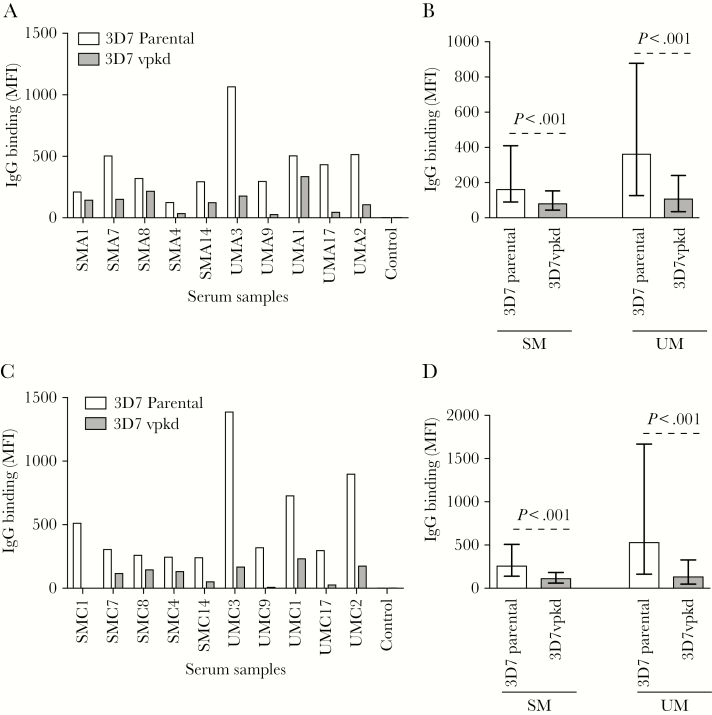Figure 1.
Antibodies to the surface of Plasmodium falciparum–infected erythrocytes (IEs) are directed at PfEMP1. A and C, A representative selection of serum samples tested for antibodies to 3D7parental and 3D7vpkd parasites. Samples were collected from severe malaria (SM) and uncomplicated malaria (UM) at acute infection (A) and following convalescence (C). Samples from nonexposed Melbourne residents were used as a negative control (control). Immunoglobulin G (IgG) binding to 3D7vpkd was substantially reduced in all individuals. There was minimal background reactivity observed among sera from Melbourne residents. IgG binding levels are expressed as geometric mean fluorescence intensity (MFI) for all graphs; assay was performed once; bars represent MFI values of samples tested in singles. B and D, Total IgG binding to the surface of erythrocytes infected with 3D7vpkd was substantially reduced compared to 3D7parental parasites in both SM and UM groups at acute infection (B) and following convalescence (D). Assay was performed once; bars represent median and interquartile ranges of samples that were classified as antibody positive to 3D7parental (B, n = 182/235 for SM and n = 177/213 for UM; D, n = 157/184 for SM and n = 153/173 for UM); P values were calculated using a paired Wilcoxon signed-rank test. Abbreviations: IgG, immunoglobulin G; MFI, mean fluorescence intensity; SM, severe malaria; UM, uncomplicated malaria.

